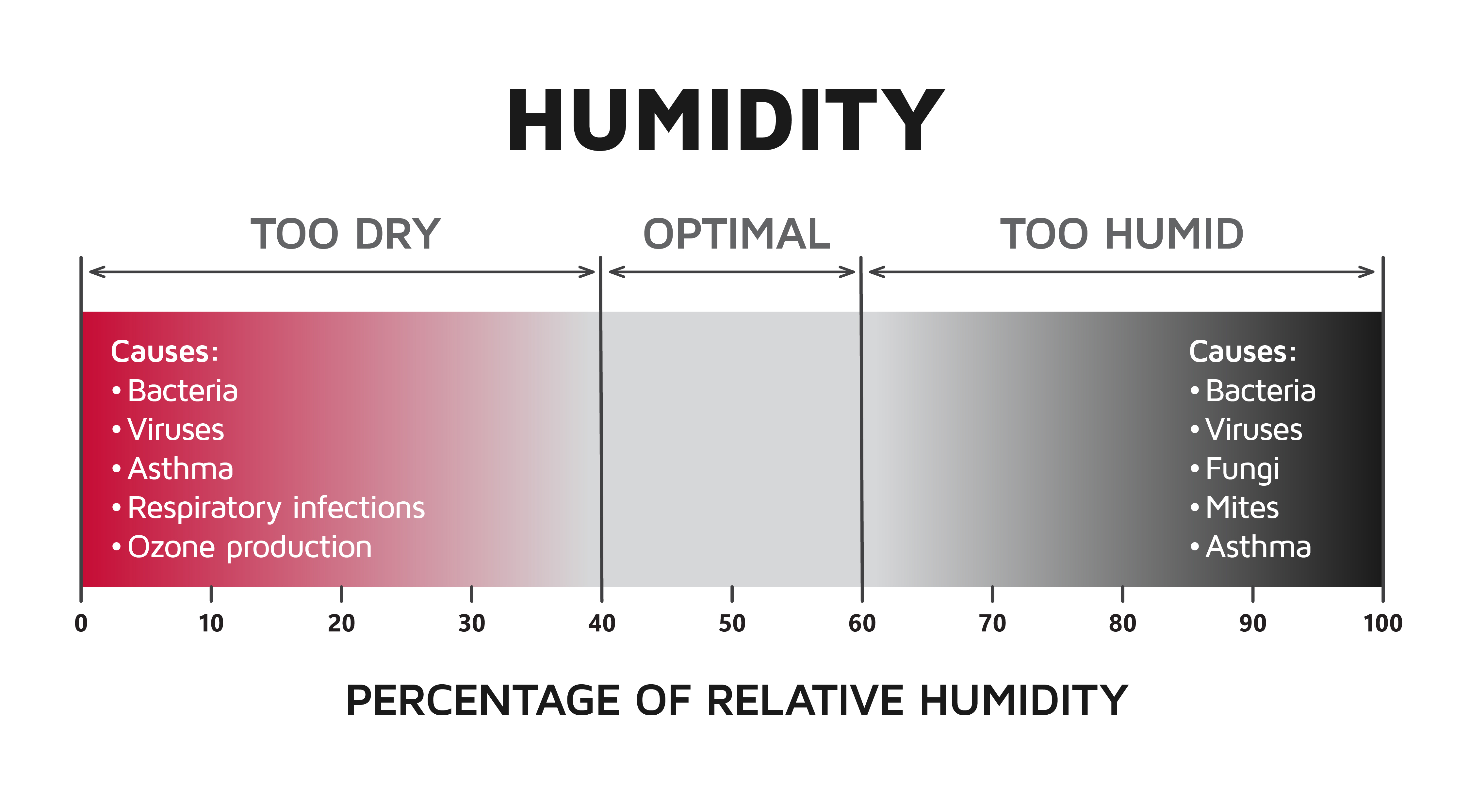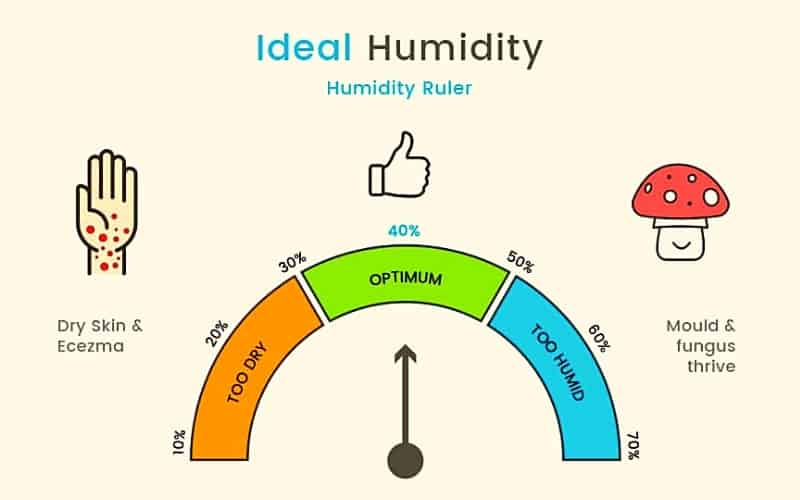What Should Humidity Be In House In Summer
Maintaining the right humidity level in your home during the summer months is crucial for comfort, health, and even the lifespan of your home's structure and belongings. Too much humidity creates a breeding ground for mold and mildew, while too little can lead to dry skin and irritated sinuses. So, what should your humidity be in house in summer, and how do you achieve and maintain it? Let's dive in.
Ideal Humidity Levels: The Sweet Spot
The generally recommended relative humidity (RH) level for your home in the summer is between 30% and 60%. However, the ideal range is more specifically 40-50%. This range provides the best balance of comfort and health benefits.
Anything consistently above 60% is considered too high, creating an environment conducive to mold and mildew growth, dust mites proliferation, and uncomfortable stickiness. Levels below 30% are too dry, leading to dry skin, cracked wood furniture, and increased static electricity.
Why is Humidity Important?
- Comfort: High humidity makes the air feel hotter than it actually is, forcing your AC to work harder and raising energy bills.
- Health: Excess humidity encourages the growth of mold, mildew, and dust mites, all of which are allergens that can trigger asthma and other respiratory problems. Dry air can irritate sinuses and exacerbate allergies.
- Home Preservation: High humidity can damage wood floors, furniture, and even the structure of your home. It can also promote rust and corrosion.
Identifying High Humidity Issues
Here are some telltale signs that your home's humidity is too high:
- Visible Mold or Mildew: Look for dark spots on walls, ceilings, or in bathrooms.
- Musty Odors: A persistent musty smell, especially in basements or bathrooms.
- Condensation: Water droplets on windows, mirrors, or pipes.
- Sticky or Clammy Air: A general feeling of discomfort and stickiness.
- Warped Wood: Doors or windows that stick or are difficult to close.
Identifying Low Humidity Issues
Conversely, here are some indicators that your home's humidity is too low:
- Dry Skin and Hair: Increased dryness and itching.
- Static Electricity: Frequent shocks when touching objects.
- Cracked Wood Furniture: Damage to wooden surfaces.
- Sore Throat or Nasal Passages: Dryness and irritation.
Tools to Measure Humidity
The easiest way to determine your home's humidity level is with a hygrometer. These are inexpensive devices that can be purchased at most hardware stores or online. There are two main types:
- Analog Hygrometers: These use a needle to indicate the humidity level on a dial. While less precise, they are often decorative and require no batteries.
- Digital Hygrometers: These provide a digital readout of the humidity level. They are generally more accurate and often include temperature readings. Many smart thermostats also include a built-in hygrometer.
Addressing High Humidity: DIY Solutions
If your home's humidity is too high, try these DIY solutions:
- Improve Ventilation: Open windows and doors (when the outdoor humidity is lower than indoor) to allow fresh air to circulate. Use exhaust fans in bathrooms and kitchens when showering or cooking.
- Run Your Air Conditioner: Your AC unit naturally dehumidifies the air as it cools. Ensure your AC is properly sized for your home; an oversized unit may cool the air too quickly without adequately removing moisture.
- Use a Dehumidifier: Portable dehumidifiers are effective for removing excess moisture from specific rooms. Choose a model with the appropriate capacity for the size of the area you need to dehumidify.
- Fix Leaks: Repair any leaks in your plumbing or roof. Even small leaks can contribute to high humidity levels.
- Properly Vent Appliances: Ensure your clothes dryer is properly vented to the outside to prevent moisture from building up indoors.
- Reduce Indoor Plants: While plants add beauty to your home, they also release moisture into the air. Consider reducing the number of plants if you are struggling with high humidity.
Addressing Low Humidity: DIY Solutions
If your home's humidity is too low, consider these options:
- Use a Humidifier: Portable humidifiers add moisture to the air. Choose a model appropriate for the size of the room. There are several types, including:
- Evaporative Humidifiers: These use a fan to blow air through a wet wick, evaporating water into the air.
- Ultrasonic Humidifiers: These use ultrasonic vibrations to create a fine mist.
- Steam Vaporizers: These boil water to create steam, which is then released into the air. Caution: Steam vaporizers can be hot and pose a burn risk, especially to children.
- Take Shorter Showers: Long, hot showers can contribute to low humidity in your home.
- Boil Water: Simmering water on the stove can add moisture to the air (but be mindful of safety).
- Add Indoor Plants: Plants release moisture into the air through transpiration.
When to Call a Professional
While many humidity issues can be addressed with DIY solutions, there are times when it's best to call a qualified HVAC technician. Consider professional help if:
- Your HVAC System is Malfunctioning: If your AC unit is not cooling properly or is cycling on and off frequently, it may not be dehumidifying the air effectively.
- You Have Persistent Mold or Mildew: Mold and mildew growth can be difficult to eradicate and may indicate a more serious underlying problem.
- You Suspect a Hidden Leak: If you cannot locate the source of a leak, a professional can use specialized equipment to find it.
- You Are Considering Whole-House Solutions: For persistent humidity problems, a whole-house dehumidifier or humidifier may be the best solution. These systems are installed directly into your HVAC system and can provide consistent humidity control throughout your home.
- You're Not Comfortable Working With Electricity: Certain repairs may involve working with electrical components. If you are not comfortable with this, it's best to leave it to a professional.
Understanding Air Conditioner Dehumidification
Your air conditioner plays a significant role in dehumidifying your home. As air passes over the evaporator coil, moisture condenses and drains away. However, several factors can affect your AC's dehumidification capabilities:
- Proper Sizing: As mentioned earlier, an oversized AC unit may cool the air too quickly without adequately removing moisture. An undersized unit will struggle to maintain a comfortable temperature and humidity level.
- Airflow: Proper airflow is essential for efficient dehumidification. Ensure your air filters are clean and that vents are not blocked.
- Refrigerant Levels: Low refrigerant levels can reduce your AC's cooling and dehumidification capacity.
- Coil Condition: Dirty evaporator coils can reduce heat transfer and dehumidification. Regular cleaning is essential.
Estimated Repair Costs
These are rough estimates and can vary widely based on location, the complexity of the job, and the specific contractor.
- AC Tune-Up: $75 - $200
- Refrigerant Recharge: $150 - $400
- Duct Cleaning: $300 - $1000
- Whole-House Dehumidifier Installation: $1500 - $3500
- Mold Remediation: $500 - $6000+ (depending on the extent of the damage)
Preventive Maintenance for Humidity Control
Here are some preventative steps you can take to maintain optimal humidity levels in your home:
- Regularly Inspect for Leaks: Check plumbing fixtures, roofs, and windows for any signs of leaks.
- Clean Gutters and Downspouts: Ensure gutters and downspouts are clear of debris to prevent water from pooling around your foundation.
- Maintain Your HVAC System: Schedule regular maintenance for your AC unit, including cleaning coils and checking refrigerant levels.
- Monitor Humidity Levels: Use a hygrometer to track humidity levels in your home and make adjustments as needed.
Safety First!
When working with electrical appliances, always follow these safety precautions:
- Turn Off Power: Before performing any maintenance or repairs on your AC unit or other appliances, turn off the power at the circuit breaker.
- Wear Safety Gear: Wear gloves and eye protection when handling chemicals or working in dusty environments.
- Read Instructions: Carefully read and follow the manufacturer's instructions for any tools or equipment you are using.
- Don't Work With Water and Electricity: Never work with electrical components in wet conditions.
Conclusion
Maintaining the correct humidity level in your home is essential for your comfort, health, and the preservation of your property. By understanding the ideal humidity range, identifying potential problems, and taking proactive steps to control humidity, you can create a healthier and more comfortable living environment. Remember, when in doubt, consult with a qualified HVAC professional.










